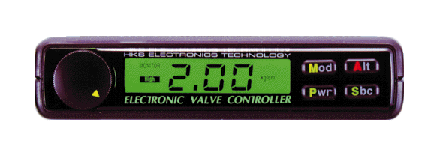



 They told me to install an Electronic Boost Controller. In my opinion it is the most easy and safest way to improve performance.
They told me to install an Electronic Boost Controller. In my opinion it is the most easy and safest way to improve performance.| stock | zener 4.3 v | zener 4.7 v | |
|---|---|---|---|
| vacuum with 500 mmHg | 1.33 volt | 1.33 volt | 1.33 volt |
| 0.00 bar turbo pressure | 2.55 volt | 2.55 volt | 2.55 volt |
| 0.55 bar turbo pressure | 3.65 volt | 3.65 volt | 3.65 volt |
| 0.72 bar turbo pressure | 4.00 volt | 3.93 volt | 4.00 volt |
| 1.00 bar turbo pressure | max. 4.3 volt = fuelcut | 3.93 volt | max. 4.3 volt = fuelcut |
 Brembo rotors and KVR pads are on the car, with SS brake lines. The brake feeling is much better now.
Brembo rotors and KVR pads are on the car, with SS brake lines. The brake feeling is much better now. 15-03-2000 Whiteline handling kit and adjustable rear sway bar. This is an big improvement especially at high speed.
15-03-2000 Whiteline handling kit and adjustable rear sway bar. This is an big improvement especially at high speed.| Front | Rear | |
| Toe in | 0,0 | 0,0 |
| Camber | - 0,5 | - 0,5 |
 Car is running well, driveability is great.
Car is running well, driveability is great.| Before G-Force upgrade with 0.75 bar | 164 kW/5.680 | 313,5 Nm/4.200 | 161 kW/5.890 | 308 Nm/3.640 | 176 kW/6.200 | 325 Nm/4.090 |
| After G-Force upgrade with 0.75 bar | 177 kW/5.800 | 343 Nm/4.200 | 181 kW/5.890 | 348 Nm/3.840 | 187 kW/6.020 | 353 Nm/3.845 |
| 0.85 bar | 945 millivolt |
| 1.00 bar | 900 millivolt |
| 1.10 bar | 880 millivolt |
| Frequency 15 HZ | Duty 50 % | Test pressure 2.5 KG/CM |
| Testing time 20 sec. | Test temperature 20°C | |
| Volume | Leakage test | |
| Injector 1 | 65 cc | ok |
| Injector 2 | 65 cc | ok |
| Injector 3 | 65 cc | ok |
| Injector 4 | 65 cc | ok |